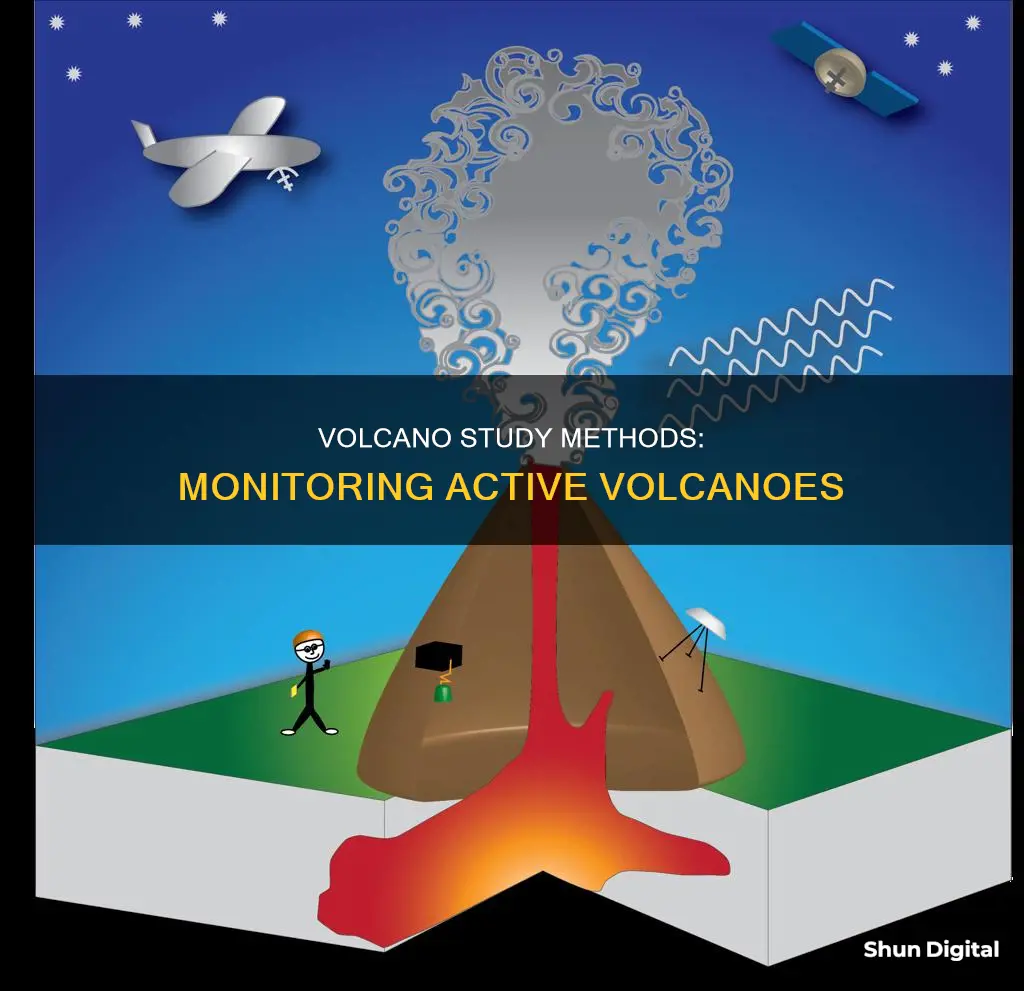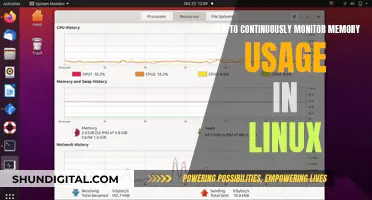
Volcanology is the study of volcanoes, lava, magma and related geological, geophysical and geochemical phenomena. Volcanologists use a variety of tools and techniques to monitor and study volcanoes. These include:
- Seismometers and seismographs: Instruments that detect and record earthquakes. Volcanologists look for increased seismic activity during volcanic events, in particular long-period harmonic tremors, which signal magma movement.
- Instruments that measure ground deformation: Such as EDM, levelling, GPS and tiltmeters. These instruments help monitor changes in the shape of a volcano, which can indicate magma upwelling.
- Instruments that detect and measure volcanic gases: Such as COSPEC and miniDOAS, which analyse the presence of volcanic gases like sulphur dioxide. An increase in gas emissions, particularly changes in composition, may signal an impending eruption.
- Temperature measurements: Volcanoes become hotter when magma starts to rise. Volcanologists monitor temperature changes using thermometers and by observing changes in the thermal properties of volcanic lakes and vents.
- Remote sensing: Satellites are widely used to monitor volcanoes as they allow a large area to be observed easily. Satellites can measure the spread of an ash plume and sulphur dioxide emissions. Techniques like InSAR and thermal imaging can monitor scarcely populated areas where it would be too expensive to maintain instruments on the ground.
- Stratigraphic analyses: Analysing tephra and lava deposits and dating them to establish patterns of volcanic eruptions.
- Compositional analysis: Grouping volcanoes by type and origin of magma, matching volcanoes to a mantle plume, understanding the formation and evolution of magma reservoirs, etc.
| Characteristics | Values |
|---|---|
| Seismic activity | Seismometers and seismographs |
| Ground deformation | EDM, levelling, GPS, tiltmeters |
| Volcanic gases | COSPEC, mini-DOAS, LIDAR, aerial photography |
| Temperature | Thermometers |
| History of volcanic activity | Historical records, cooled lava fields, ash deposits |
What You'll Learn
- Scientists use seismographs to detect earthquakes, which are a good indicator of an imminent volcanic eruption
- Tiltmeters are used to measure changes in the angle of a volcano's slope, which can be caused by the pressure of underlying magma and gas
- Gas emissions are monitored to detect an increase in sulphur dioxide, which often indicates an impending eruption
- Satellites are used to monitor large, scarcely populated areas where it would be too expensive to maintain instruments on the ground
- Thermometers are used to monitor temperature changes, which can indicate upcoming volcanic activity

Scientists use seismographs to detect earthquakes, which are a good indicator of an imminent volcanic eruption
A seismograph is securely mounted onto the surface of the earth so that when the earth shakes, the entire unit shakes with it, except for the mass on the spring, which has inertia and remains in the same place. As the seismograph shakes under the mass, the recording device on the mass records the relative motion between itself and the rest of the instrument, thus recording the ground motion. These mechanisms are no longer manual, but instead work by measuring electronic changes produced by the motion of the ground with respect to the mass.
A seismogram is the recording of the ground shaking at the specific location of the instrument. On a seismogram, the horizontal axis = time (measured in seconds) and the vertical axis = ground displacement (usually measured in millimetres). When there is no earthquake reading, there is just a straight line except for small wiggles caused by local disturbance or "noise". Seismograms are digital now — there are no more paper recordings.
Scientists will measure characteristics such as seismic activity surrounding the volcano, the deformation of the cone, gas emissions, and the past history of volcanic eruptions. These measurements will lead scientists to advise officials to take decisive action that can lead to evacuations, and hopefully, the prevention of a catastrophe.
A good indicator of a volcano that is just about to erupt is a series or "swarm" of earthquakes. Scientists measure these with instruments called seismographs, which capture the seismic waves released by the movement of the volcanic slope. When magma moves beneath an active volcano, it can shake the ground nearby. The sudden shaking releases energy in the form of seismic waves, that is, it produces seismic movements or earthquakes.
Volcano observatories make forecasts with great caution as they can have huge impacts on the affected populations, in some cases forcing people to leave behind homes, farms, and livestock. Inaccurate forecasts can lead to unnecessary obligations of scarce resources and/or undermine residents' confidence in future forecasts.
Reliable forecasts can be made by volcano observatory staff, who have the experience to interpret their monitoring and detect eruption precursors. Most nations with volcanoes have tasked an established observatory, run by the government or by a university, to provide eruption forecasts to the public. All of these observatories are members of the World Organization of Volcano Observatories (WOVO).
Replacement Power Supply for Acer Monitors: Where to Buy?
You may want to see also

Tiltmeters are used to measure changes in the angle of a volcano's slope, which can be caused by the pressure of underlying magma and gas
Tiltmeters are a crucial tool in volcano monitoring, offering scientists a way to measure small changes in the angle of a volcano's slope. These sensitive instruments can detect minute alterations in the ground's tilt, which can indicate the presence of underlying magma and gases. This technology plays a vital role in predicting volcanic eruptions and keeping nearby populations safe.
Tiltmeters have been used to monitor volcanoes since the early 20th century, with the first application of this technology occurring at Kilauea volcano in Hawaii in 1912. Over time, tiltmeter designs have evolved, and today, the modern electronic tiltmeter is the most commonly used type. This instrument functions similarly to a carpenter's level, using a small container of conducting fluid and a "bubble" to gauge changes in slope angle. These modern tiltmeters can detect changes as minuscule as one arc second and are highly resistant to temperature influences, making them extremely reliable.
The installation process for tiltmeters is precise and requires fastening the instrument below the surface to a stable, polished rock surface. This setup minimises the environmental impact on the tilt record. Additionally, placing tiltmeters in shallow boreholes yields the best results as it insulates the sensors from factors like temperature and pressure changes.
The data collected by tiltmeters is invaluable for volcano monitoring and has been used to predict eruptions. For instance, at Kilauea Volcano in Hawaii, tiltmeters detected cyclic deflation and inflation of the summit, which helped scientists locate the small magma reservoir responsible for these pressure changes. This predictive capability underscores the importance of tiltmeters in volcano monitoring and ensuring the safety of nearby communities.
Where to Find Your ASUS Monitor Model Number
You may want to see also

Gas emissions are monitored to detect an increase in sulphur dioxide, which often indicates an impending eruption
Gas emissions are a crucial aspect of volcano monitoring as they can indicate an impending eruption. Sulphur dioxide (SO2) is one of the key gases that scientists monitor. An increase in sulphur dioxide emissions often indicates a higher chance of eruption as it is released when there is a higher level of gas emission from a volcanic site.
Volcanic gas emissions are monitored using a variety of methods and instruments. Gas emissions are often monitored in situ, with scientists collecting direct samples of gases from fumaroles to be analysed in a laboratory setting. This method provides a detailed chemical analysis of specific fumaroles and vents, and is useful for long-term surveillance of volcanic systems. However, it is not suitable for monitoring rapidly changing conditions as laboratory analysis can take days or weeks to complete.
Another method is the use of portable instruments such as gas chromatographs or spectrometers, which can measure gases directly from the vent or fumarole. These instruments are configured to make measurements over several hours and provide immediate results. However, they often only measure a few of the volcanic gases of interest.
A third method is the use of continuous gas monitoring stations, which are often deployed to identify short-lived degassing events as well as long-term changes. These stations consist of chemical or optical gas sensors that measure gas concentrations at or near a fumarole, with data typically transmitted via radio or satellite to an off-site facility.
One instrument used to measure sulphur dioxide emissions specifically is the correlation spectrometer (COSPEC). This instrument measures the amount of ultraviolet light absorbed by SO2 molecules within a volcanic plume, using scattered sunlight as its light source. It is typically mounted in an aircraft and flown underneath the plume at right angles to its direction of travel to determine the average SO2 concentration.
Another instrument used to measure sulphur dioxide is the mini-UV spectrometer (Flyspec), which is smaller and lighter than the COSPEC and can be installed in either a helicopter or fixed-wing aircraft. It is flown underneath the plume in the same way as the COSPEC to determine SO2 concentration.
The monitoring of gas emissions, including sulphur dioxide, is a vital tool for scientists to predict volcanic eruptions and understand volcanic activity. By measuring changes in emission rates, scientists can infer changes in a volcano's magma reservoir and whether magma might be moving towards the surface.
Convincing Mom: Broken Monitor Confessions and Strategies
You may want to see also

Satellites are used to monitor large, scarcely populated areas where it would be too expensive to maintain instruments on the ground
Satellites are used to monitor volcanoes in large, scarcely populated areas where it would be too expensive to maintain instruments on the ground. Satellites can measure the spread of an ash plume, such as the one from Eyjafjallajökull's 2010 eruption, as well as SO2 emissions. InSAR and thermal imaging can monitor these areas.
The United States Geological Survey (USGS) is responsible for monitoring volcanic activity in the United States. There are 169 active volcanoes in the United States, more than half of which could erupt explosively. As populations increase, areas near volcanoes are being developed, and aviation routes are increasing, so more people and property are at risk from volcanic activity.
Volcanic eruptions can drastically alter land and water for tens of kilometres around a volcano. Tiny liquid droplets of sulfuric acid erupted into the stratosphere can change the planet's climate temporarily. Eruptions often force people living near volcanoes to abandon their land and homes, and farther away, cities, crops, industrial plants, transportation systems, airplanes, and electrical grids can still be damaged by tephra, ash, lahars, and flooding.
Scaling Monitor Display: Adjusting Size for Optimal Viewing
You may want to see also

Thermometers are used to monitor temperature changes, which can indicate upcoming volcanic activity
Thermometers can be used to take direct measurements of the temperature of thermal features. However, this can be dangerous, and is only done when the area is safe to be in for several minutes. Direct measurements are very precise, but they are limiting because they can only cover a small or specific area.
Temperature measurements can also be made from a distance with cameras or instruments that measure thermal infrared (TIR) radiation. However, TIR radiation can be obscured by thick clouds or ash plumes, so these types of measurements are best made during favourable atmospheric conditions.
Thermometers can be used to monitor the temperature of the gases emitted by volcanoes. The gases emitted by volcanoes can be harmful to humans, animals, plants, and property. The gases emitted by volcanoes can be used to determine the probability and timing of an eruption.
How Sweepstakes Affect Ankle Monitors: A Comprehensive Guide
You may want to see also
Frequently asked questions
Scientists use a variety of tools and techniques to study volcanoes. These include seismometers and seismographs to detect earthquakes, tiltmeters to measure changes in the angle of a volcano's slope, EDM, GPS, and InSAR to measure ground deformation, and COSPEC and mini-DOAS to detect volcanic gases. They also use satellites to monitor volcanoes, as they allow a large area to be monitored easily.
Scientists monitor volcanoes by tracking changes in seismic activity, ground deformation, gas emissions, and temperature. They also monitor the history of volcanic activity to identify patterns.
Scientists monitor volcanoes to predict eruptions and issue timely warnings to communities at risk. Volcanic eruptions can have devastating impacts, including loss of life, damage to infrastructure, and disruption to aviation.







